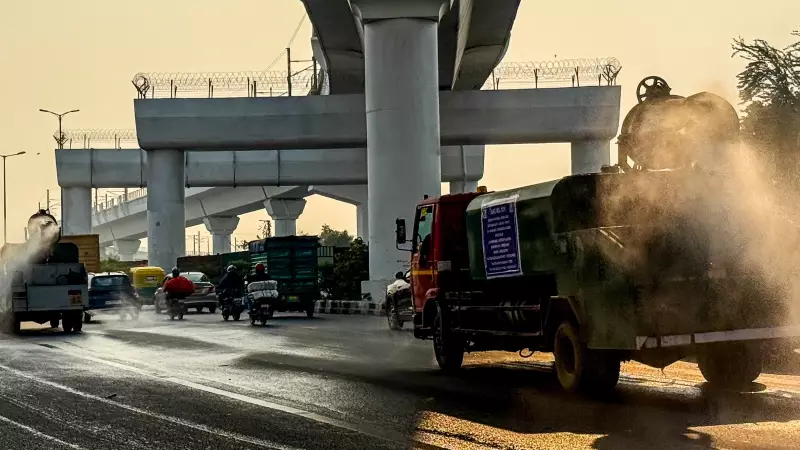
Delhi's Air Quality Crisis Deepens as Stubble Burning Contribution Peaks
For the second day in a row, the national capital gasped for breath as its air quality index (AQI) remained firmly in the 'Severe' category on Wednesday, recording a value of 418. This alarming situation comes a day after Delhi registered its first 'Severe' air day of the season on Tuesday, with an AQI of 428, marking the worst air quality since December 19 of the previous year.
Stubble Burning Emerges as Top Polluter
The most significant development in this pollution episode is the dominant role of stubble burning. Data from the Decision Support System (DSS) of the Indian Institute of Tropical Meteorology (IITM) revealed that on Wednesday, the contribution of stubble burning from neighboring states to Delhi's PM2.5 concentration soared to 22.47%. This is the highest share recorded so far this season and, for the first time, it has surpassed other major emission sources.
In a direct comparison, transport emissions were recorded at 15.59%, making farm fires the primary culprit for the city's toxic air. Projections for Thursday indicate a shift, with stubble burning's contribution expected to drop to around 10.1%, while transport-related emissions are forecast to rise to 19.3%.
A Spike in Farm Fires and Unfavourable Weather
The data on ground-level incidents paints a clear picture of the source. According to the Indian Agricultural Research Institute (IARI), there were 1,477 stubble burning incidents on Monday alone. The breakdown across states was as follows:
- Punjab: 155
- Haryana: 29
- Uttar Pradesh: 266
- Rajasthan: 159
- Madhya Pradesh: 868
The cumulative count from September 15 to November 12 stands at a staggering 13,793 farm fires across six states. The contribution of stubble burning has seen a sharp upward trend since late October, rising from a mere 2-4% between October 26 and November 5 to a peak of 22.47% on November 12.
Compounding the problem are unfavourable local weather conditions. The capital has been experiencing calm surface winds, lower temperatures, and strong nighttime inversion layers. These conditions act like a lid, trapping pollutants close to the ground and preventing their dispersion. Furthermore, westerly winds blowing at 10-17 kmph have been efficiently transporting smoke from Punjab and Haryana directly into Delhi.
Official Response and Forecast
In response to the deteriorating air quality, the Commission for Air Quality Management (CAQM) invoked Stage III of the Graded Response Action Plan (GRAP) on Tuesday. The measures under this stage include:
- A ban on non-essential construction and demolition work.
- A shift to hybrid mode of operation for primary classes.
- A prohibition on the entry of BS-III petrol and BS-IV diesel light motor vehicles into Delhi.
The weather outlook offers little immediate relief. The India Meteorological Department (IMD) reported that Wednesday's night temperature was 10.4 degrees Celsius, nearly three degrees below normal. The IITM forecast predicts that the AQI is very likely to remain in the 'Very Poor' category from November 13 to 15, with a similar trend expected for the following six days. The IMD has forecast mainly clear skies with mist or shallow fog in the mornings until November 18.





